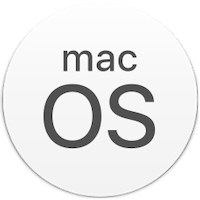$ cp /etc/netplan/01-netcfg.yaml /etc/netplan/01-netcfg.yaml.orig $ vi /etc/netplan/01-netcfg.yaml Find current IP address $ ifconfig Replace the content with the following # This file describes the network interfaces available on your system # For more information, see netplan(5). network: version: 2 renderer: networkd ethernets: ens160: dhcp4: no addresses: [192.168.1.45/24 ] gateway4: 192.168.1.1 nameservers: search: [static01.skayal.com] addresses: [192.168.1.1] Generate the required configuration for the renderers. $ netplan generate Apply all configuration and restart renderers. $ netplan apply ...
Read MoreWhen you run the installer writes “The installation cannot continue as the installer file may be damaged. Download the installer file again”. Code: sudo spctl --master-disable ...
Read MoreThere are two ways to make this happen. The first is using the semicolon like so: sudo apt-get update; sudo apt-get upgrade -y The only problem with that method is that the second command will run, even if the first command fails. In those cases, you'd run the command: sudo apt-get update && sudo apt-get upgrade -y Both versions of the command will run, but the second form will only run...
Read MoreWhat is DNS-Over-HTTPS? DNS-over-HTTPS is an enhanced privacy protocol for the internet’s naming system that’s aimed at creating a safer browsing experience for all users. Microsoft recently became the latest tech player to announce that it would be implementing DNS-over-HTTPS – also known as ‘DoH’ – to improve the privacy and reliability of internet traffic for Windows users by supporting encrypted DNS queries. The move, which joins earlier...
Read MoreEdit file /usr/share/phpmyadmin/libraries/sql.lib.php using this command: sudo nano +613 /usr/share/phpmyadmin/libraries/sql.lib.php On line 613 the count function always evaluates to true since there is no closing parenthesis after $analyzed_sql_results['select_expr']. Making the below replacements resolves this, then you will need to delete the last closing parenthesis on line 614, as it's now an extra parenthesis. Replace: ((empty($analyzed_sql_results['select_expr'])) || (count($analyzed_sql_results['select_expr'] == 1) ...
Read MoreMySQL 5.7 and above Creating a Superuser for phpMyAdmin In terminal, log in to MySQL as root. sudo mysql -p -u root CREATE USER 'pmauser'@'localhost' IDENTIFIED BY 'password_here'; Now we will grant superuser privilege to our new user pmauser. GRANT ALL PRIVILEGES ON *.* TO 'pmauser'@'localhost' WITH GRANT OPTION; You should now be able to access phpMyAdmin using this new user account....
Read MoreFIX : “An Error Is Preventing This Key From Being Opened” For Registry Editor In Windows 10 1.Download PsExec tool by Sysinternals. DOWNLOAD LINK 2. right click -> Extract Alloption. 3. Copy all the content inside this folder to C:\Windows\System32 folder. 4. Right click Start Button and select Command Prompt (Admin). Type this command and press Enter key: psexec -i -d -s c:\windows\regedit.exe This will launch Registry Editor with system account and...
Read Morefind ./ -printf "%f\n" or...
Read MorePowerShell 7.0 is now off beta and has officially arrived for all supported platforms, including Windows 10, macOS, and various Linux distros. It comes as the next major update after the Powershell Core 6, which was released three years ago. That was the time when Microsoft open-sourced PowerShell, although its Windows variant still lives behind closed doors. PowerShell 7 Features – What’s New? The Powershell 7 update is...
Read More- 1
- 2




